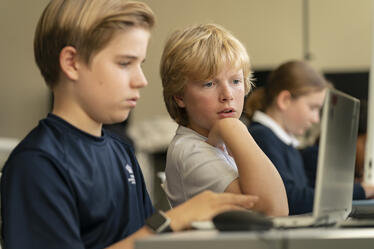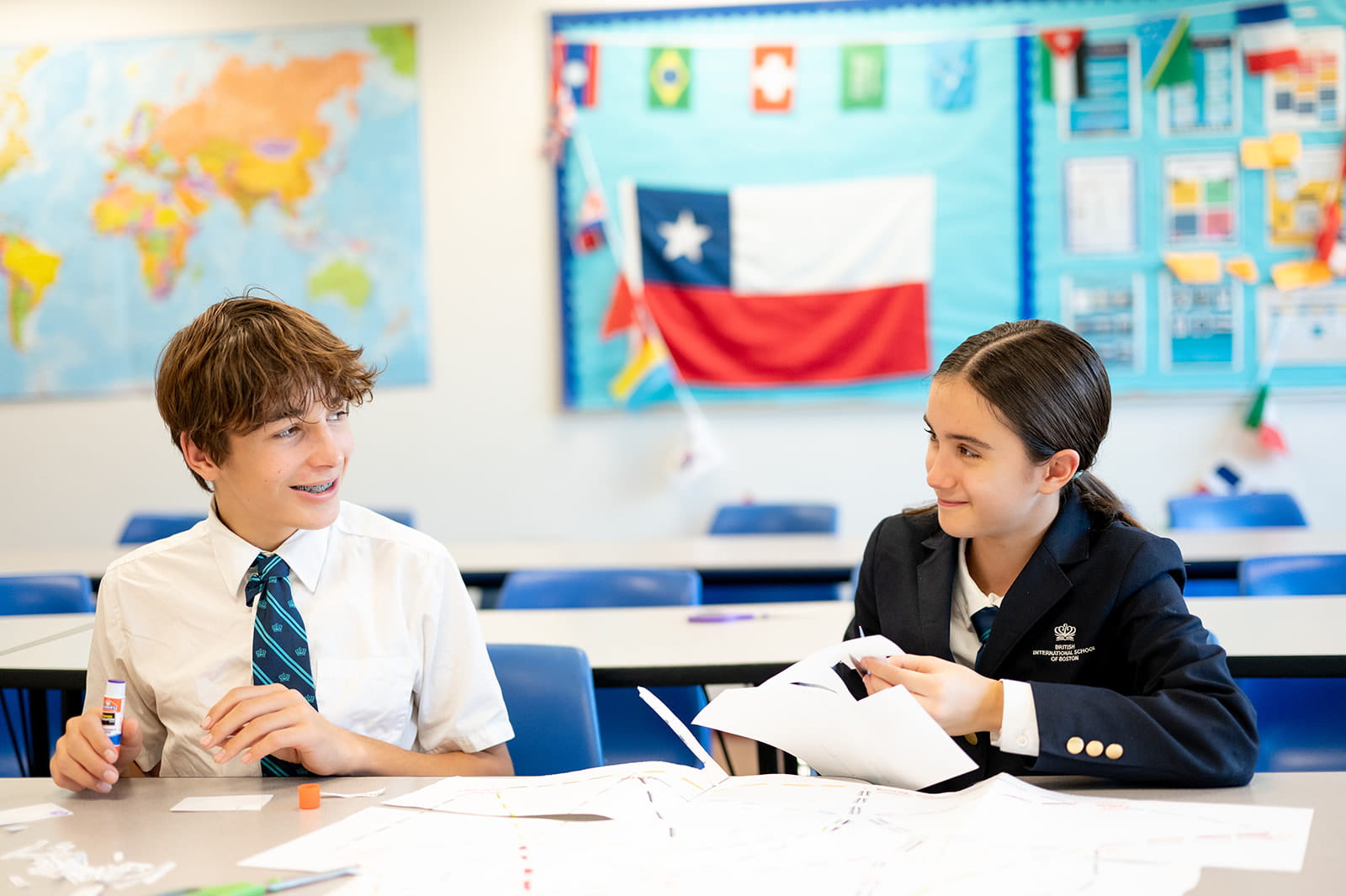Call me old fashioned butwhile reflecting on the technological advancements of the last few decades, I feel that one could be excused for thinking thatwe’ve blended fiction with reality and have ended up in the world of Blade Runner or Back to the Future. As of 2022, the estimated number of internet users worldwide was 5.3 billion! And, in recent years, we’ve beenintroducedto variousbrand-new devices like smartphones, smartwatches, tablets, and voice assistant devices – which have mostly become part of the school experience.
So, how do we harness the power of technology, both in classrooms and beyond,tobenefit our young learners of today?
The Benefitsof Ed Tech and what this looks like at the British International School of Boston (BISB)
The benefits of educational technology truly are widespread and wide-reaching, resulting in dynamic learning experiences and innovative, free-thinking students who are problem solvers.
According to the sixth Global Education Monitoring (GEM) Report, Technology in education: A tool on whose terms?, our educational focus should be on learning outcomes and not digital inputs. To help improve learning, digital technology should not be a substitute for, but a complement to, face-to-face interaction with teachers, including:
Access to information and resources, whichare enhanced through digital libraries and platforms like Kognity and EverLearner, utilized by BISB in Maths, Science, and PE
The preparation of students for the modern workplace. At BISB we like to feel that our students are becoming proficient in key platforms such as ManageBac, Microsoft TEAMS and UniFrog, which aids their digital literacy and information management skills, assists them in being adaptable and flexible, and exposes them to a variety of functionalities that promote collaboration
Fostering global awareness and cultural exchange. At Nord Anglia Education, contacting peers around the world using Global Campus( anonline platform that brings together British International School of Boston students with 78 other Nord Anglia Education schools around the world as one community), is a fantastic example of this
Diverse learning styles whilefacilitating differentiation in the classroom. For instance, at BISB, we utilize The Day, a student-friendly news platform, offering content at various reading levels
Teaching students how to be responsible online. The classroom definitely becomes a microcosm of the wider digital landscape, so taking opportunities to explore how to become a responsible digital citizen at school, particularly through our Personal, Social, and Health Education (PSHE) programme run within mentor time, is key
Learning with virtual reality (VR), coding, and engaging online challenges like Kahoot.(whodoesn’t love a Kahoot?) – these are all examples of adding diversity, and another means of engagement, to the learning experience
To leverage many of these benefits, the British International School of Boston has implemented a devicepolicy to allow students and teachers to utilize the power of personalization and e-learning tools to support and enrich learning.More information regarding our Digital Citizenship Behavior and Procedure Policy can be found in our BISB Middle and High School Welcome Pack, distributed at the beginning of each academic year.
The usage of technology can perfectly complement learning and, is often, the cherry atop the educational experience. However, balance and diversity are still key and there can often be a fine line between tech-literate and tech-reliant.For instance, a key topic at present is the use of Artificial Intelligence (AI) in academic writing, leading to some students’ overreliance on this. At BISB,we’ll be introducing an AI Policy at the start of this academic year, as part of our wider Academic Honesty Policy to cater to this technological change and to better educate our students on this. And this brings me to my next topic.
The challenges and finding the right balance
The topic of balance is crucial when considering a child's mental and physical well-being in relation to screen time. It is essential to incorporate screen time and digital technology into a healthy lifestyle by balancing it with other developmental and well-being activities such as physical activity, extracurricular engagements, and socializing.
Ensuring that screen time doesn't disrupt sleep is also important. According to the CDC, children between 6 to 12 years old should get 9-12 hours of sleep per night, while 13 to 18 year-olds need 8-10 hours.
Some of our top parental tips include:
Encouraging routines regardingscreen time and digital use, considering the ‘where’, ‘when’ and ‘how’ of technology usage
Aiming for shorter screen time sessions. Schedule movement time and rest breaks can certainly help here
Making physical activity a regular part of a child’s day
Encouragingyour childto take part in extracurricular activities. This is where BISB’s after-school clubs and comprehensive sports and fixture programme could assist.
Supportingsocializing and friendships, away from devices
Ensuring your child avoids screen time and ‘blue-light’ technology just before bed, which can affect how quickly children fall asleep
Keeping digital technology out of bedrooms at night
Parents can also support in ensuring that their child is safe from online perpetrators and also cyberbullying.Much of the guidance on this recommends checking site usage and monitoring browsing content. Web providers also factor in child protection controls and security settings to their packages.Most importantly though, is having a regular dialogue with children, ensuring that they are aware of how to be safe and responsible online. This is certainly something that we reinforce in our PSHE programme.
Undoubtedly, the current young generation is destined to be far more tech-literate and tech-savvy than most of us. As lifelong learners, it is our responsibility to immerse ourselves in this world, engaging and exploring alongside them, as we teach them to adapt to technology and be responsible digital citizens. As the educational landscape continues to evolve, Ed Tech's significance will only grow, and we must embrace this progress, acknowledging both its thrilling and intimidating aspects.
In my view, Ed Tech is undeniably more terrific than tedious. However, as with any enjoyable and impactful aspect of life, moderation, and balance are crucial. Each of us bears the responsibility of maintaining this equilibrium as we move forward together into an exciting future.
Do feel free to reach out to us regarding any of the issues raised above, or if you have any questions.Likewise, if you have specific expertise in technology and/or work in this industry and would be open to sharing your expertise, research, and passions with our students, please contact Mr. Edmanson: aidan.edmanson@bisboston.org






